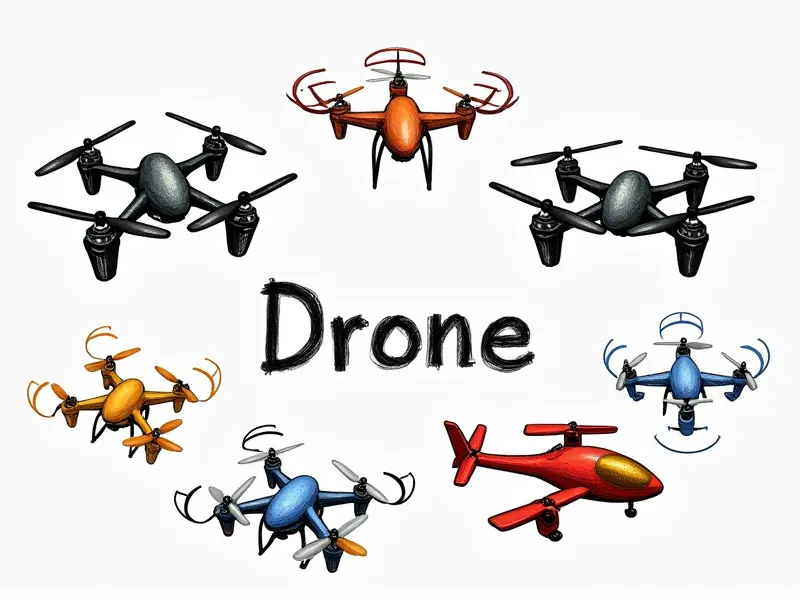How does drone autopilot work?

The world of drones has evolved significantly over the past decade, with advancements in technology making it easier than ever to capture stunning aerial footage and perform complex tasks. At the heart of this evolution is drone autopilot technology, which allows unmanned aircraft systems (UAS) to operate autonomously under various conditions. In this article, we will delve into the intricacies of how drone autopilot works, exploring its functions, capabilities, and features.
Inside Drone Autopilot Technology
The core of any drone's autopilot system is a sophisticated suite of hardware and software components designed to manage flight operations. These systems typically include:
- Sensors: GPS, accelerometers, gyroscopes, barometric pressure sensors, and magnetometers.
- Flight Control Software: Algorithms that process sensor data in real-time to maintain stability and navigate accurately.
- Data Link: Communication systems that transmit commands between the ground control station (GCS) and the drone.
Understanding Drone Autopilot Functions
The primary functions of a drone autopilot system include:
- Navigational Control: Ensuring the drone follows predefined flight paths accurately.
- Stability Management: Maintaining pitch, roll, and yaw stability during flight.
- Payload Integration: Coordinating with onboard cameras or other sensors to capture data effectively.
Exploring Drone Autopilot Capabilities
Drones equipped with autopilot systems can perform a wide range of tasks, including:
- Aerial Photography and Videography: Capturing high-resolution images and videos from the air.
- Surveying and Mapping: Creating detailed maps and 3D models for various applications like agriculture and construction.
- Search and Rescue Operations: Locating missing persons or objects in challenging terrain.
How Autopilot Controls Your Drone
The autopilot system controls the drone through a series of steps:
- Data Collection: Gathering sensor data to understand the current state of the aircraft.
- Algorithm Processing: Running algorithms to determine necessary adjustments for stability and navigation.
- Action Execution: Sending commands to motors, servos, and other components to execute flight maneuvers.
Mastering Drone Autopilot Features
To fully leverage the capabilities of a drone's autopilot system, it is essential to understand its features:
- Mission Planning Software: Tools for designing and uploading flight plans.
- Waypoint Navigation: Features that allow drones to follow predefined waypoints accurately.
- Return-to-Home (RTH): Automatic return to a designated landing spot if the signal is lost or battery levels are low.
The Magic Behind Drone Autopilot Systems
The magic of drone autopilot lies in its ability to process vast amounts of data quickly and accurately. By integrating GPS, inertial measurement units (IMUs), and other sensors, the system can maintain precise control over the aircraft's movements.
Secrets of Drone Autopilot Systems
The secrets behind effective drone autopilot systems include:
- Advanced Algorithms: Sophisticated software that optimizes flight performance and stability.
- Redundant Sensor Arrays: Multiple sensors to ensure accurate data collection even in challenging conditions.
- Real-Time Data Processing: Instantaneous analysis of sensor inputs for immediate corrective actions.
Demystifying Drone Autopilot Features
To demystify drone autopilot features, it is crucial to understand how each component works together:
- Sensor Fusion: Combining data from multiple sensors for enhanced accuracy.
- Dynamic Flight Control: Adjusting flight parameters in real-time based on environmental conditions.
- Autonomous Decision-Making: Capabilities that allow drones to make decisions without human intervention.
Basics of Drone Autopilot Operation
The basics of drone autopilot operation involve:
- Initialization: Setting up the system before flight, including calibration and configuration.
- Flight Execution: Following pre-programmed instructions to perform tasks autonomously.
- Data Logging: Recording flight data for analysis and improvement of future missions.
Revealing Drone Autopilot Capabilities
The capabilities of drone autopilot systems are vast, ranging from simple waypoint navigation to complex mission planning. By understanding these features, users can unlock the full potential of their drones:
- Mission Customization: Tailoring flight plans for specific needs.
- Environmental Adaptation: Adjusting flight parameters based on real-time environmental data.
- Enhanced Safety Features: Incorporating redundancy and fail-safes to ensure safe operation.
Simplifying Drone Autopilot Tech
To simplify the complex world of drone autopilot technology, it is essential to break down its components into manageable parts. By understanding each element individually and how they work together, users can gain a comprehensive grasp of this powerful tool:
- Understanding Sensors: Knowing what data each sensor provides.
- Algorithm Basics: Learning the fundamentals of flight control algorithms.
- Data Communication: Grasping how information is transmitted between components.
Conclusion
The world of drone autopilot technology is constantly evolving, offering new possibilities for both hobbyists and professionals. By understanding the inner workings of these systems, users can harness their full potential to achieve remarkable results in aerial photography, surveying, search and rescue operations, and more.

